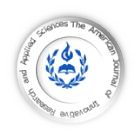
GENERAL INFORMATION

American Journal of Innovative Research & Applied Sciences
Share us on Social Media Links:



| ISSN: 2429-5396 (e) | www.american-jiras.com | All Rights Reserved |
| Web Site Form: v 0.1.05 | JF 22 Cours, Wellington le Clairval, Lillebonne | France |
| Web Site Form: v 0.1.05 | JF 22 Cours, Wellington le Clairval, Lillebonne | France |


ResearchBib, Google Scholar, SIS database, i.f.s.i.j, Scribd, IISJ, Eurasian Scientific Journal Index (ESJI), Indianscience.in, arastirmax, Directory of Research Journals Indexing, Pak Academic Sesearch, AcademicKeays, CiteSeerX, UDL Library, CAS Abstracts, J-Gate, WorldCat, Scirus, IET Inspec Direct, and getCited
Indexed by:
| HOME || ABOUT US || ARCHIVES || AIMS AND SCOP || AUTHORS || REVIEW|| SUBMIT MANUSCRIPT || EDITORIAL BOARD || CONTACT US |
| HOME | ABOUT US | ARCHIVE | AIMS AND SCOP | AUTHORS | REVIEW | SUMIBMIT MANUSCRIPT | EDITORIAL BOARED | PUBLICATION FEE |
| | ARTICLES | Am. J. innov. res. appl. sci. Volume 4, Issue 1, Pages 1-7 (January 2017) |
American Journal of innovative
Research & Applied Sciences
Research & Applied Sciences
ISSN 2429-5396 (Online)
OCLC Number: 920041286
OCLC Number: 920041286

|
| January | VOLUME 4 | N° 1 | 2017 |
Research Article
POTENTIAL NUTRITIONAL VALUES OF SKIN, PULP AND SEED OF MIRACLE FRUIT (SYNSEPALUM DULCIFICUM)
| Agbessi Kokouvi Agblekpe 1 | Elolo Osseyi 1 | and | Joseph Dossou 2 |. Am. J. innov. res. appl. sci. 2017; 4(1):1-7.
| PDF FULL TEXT | |Received | 04 December 2016| |Accepted | 10 December 2016| |Published 11 December 2016 |
POTENTIAL NUTRITIONAL VALUES OF SKIN, PULP AND SEED OF MIRACLE FRUIT (SYNSEPALUM DULCIFICUM)
| Agbessi Kokouvi Agblekpe 1 | Elolo Osseyi 1 | and | Joseph Dossou 2 |. Am. J. innov. res. appl. sci. 2017; 4(1):1-7.
| PDF FULL TEXT | |Received | 04 December 2016| |Accepted | 10 December 2016| |Published 11 December 2016 |
Authors Copyright © 2017:
| Agbessi Kokouvi Agblekpe 1 | Elolo Osseyi 1 | and | Joseph Dossou 2 |
| Agbessi Kokouvi Agblekpe 1 | Elolo Osseyi 1 | and | Joseph Dossou 2 |
Authors Contact
This article is made freely available as part of this journal's Open Access. ID: | Agbessi ManuscriptRef.1-ajiras051216 |
Authors Affiliation:
1. Université de Lomé | Ecole Supérieure des Techniques Biologiques et Alimentaires (ESTBA) | Lomé | Togo |
2. Université d’Abomey –Calavi | Faculté des Sciences Agronomiques | Abomey –Calavi | Bénin |
1. Université de Lomé | Ecole Supérieure des Techniques Biologiques et Alimentaires (ESTBA) | Lomé | Togo |
2. Université d’Abomey –Calavi | Faculté des Sciences Agronomiques | Abomey –Calavi | Bénin |
ABSTRACT
Background The miracle fruit or berry is a wild fruit so far known for the unusual taste modifying properties of its pulp to induce a sweet flavor to acidic products. Consequently, much research on this fruit has focused on the pulp and its properties to the detriment of the other constituent parts of the fruit which have nutritional potentials that deserve to be investigated. Objectives: This study aims to determine the physicochemical characteristics of the fruit, taking into account all its constituent parts, namely skin, pulp and seed. Methods: The methods used to characterize these parts are visual observation, chemical analyses and atomic absorption spectrophotometry. Results: Investigations revealed that the miracle berry is a small oval shaped wild berry with an average weight of about 0.94 to 1.28 g and an average length of about 2.12 to 2.40 cm. The fresh fruit consists of 23.74% skin, 35.45% pulp and 41.60% seed. The skin and the pulp are acidic (pH = 3.16-4.02). The skin, pulp and seed contain varying proportions of proteins (15 - 22%), fats (2 - 12%) and carbohydrates (66 - 84%). Major minerals such as K, P, Ca, Na and Mg are present and traces of heavy metals such as Pb, Cu, Cd and Ni have been noted. These different parts of the fruit also contain 0.6 - 1.16% dietary fibers and 27.42 - 72.16 mg/g of highly reactive polyphenol compounds. Conclusion: This study showed that all the different parts of the miracle fruit are rich in proteins, fats, carbohydrates, vitamin C, mineral elements and polyphenolic compounds. The skin as well as the seed can be used as supplements in human and animal food. Their significant levels of highly reactive polyphenols give them the quality of ingredients that could be used in the formulation of nutraceutical preparations for the protection of human health.
Keywords: Miracle berry, constituent elements, chemical composition, food.
Background The miracle fruit or berry is a wild fruit so far known for the unusual taste modifying properties of its pulp to induce a sweet flavor to acidic products. Consequently, much research on this fruit has focused on the pulp and its properties to the detriment of the other constituent parts of the fruit which have nutritional potentials that deserve to be investigated. Objectives: This study aims to determine the physicochemical characteristics of the fruit, taking into account all its constituent parts, namely skin, pulp and seed. Methods: The methods used to characterize these parts are visual observation, chemical analyses and atomic absorption spectrophotometry. Results: Investigations revealed that the miracle berry is a small oval shaped wild berry with an average weight of about 0.94 to 1.28 g and an average length of about 2.12 to 2.40 cm. The fresh fruit consists of 23.74% skin, 35.45% pulp and 41.60% seed. The skin and the pulp are acidic (pH = 3.16-4.02). The skin, pulp and seed contain varying proportions of proteins (15 - 22%), fats (2 - 12%) and carbohydrates (66 - 84%). Major minerals such as K, P, Ca, Na and Mg are present and traces of heavy metals such as Pb, Cu, Cd and Ni have been noted. These different parts of the fruit also contain 0.6 - 1.16% dietary fibers and 27.42 - 72.16 mg/g of highly reactive polyphenol compounds. Conclusion: This study showed that all the different parts of the miracle fruit are rich in proteins, fats, carbohydrates, vitamin C, mineral elements and polyphenolic compounds. The skin as well as the seed can be used as supplements in human and animal food. Their significant levels of highly reactive polyphenols give them the quality of ingredients that could be used in the formulation of nutraceutical preparations for the protection of human health.
Keywords: Miracle berry, constituent elements, chemical composition, food.